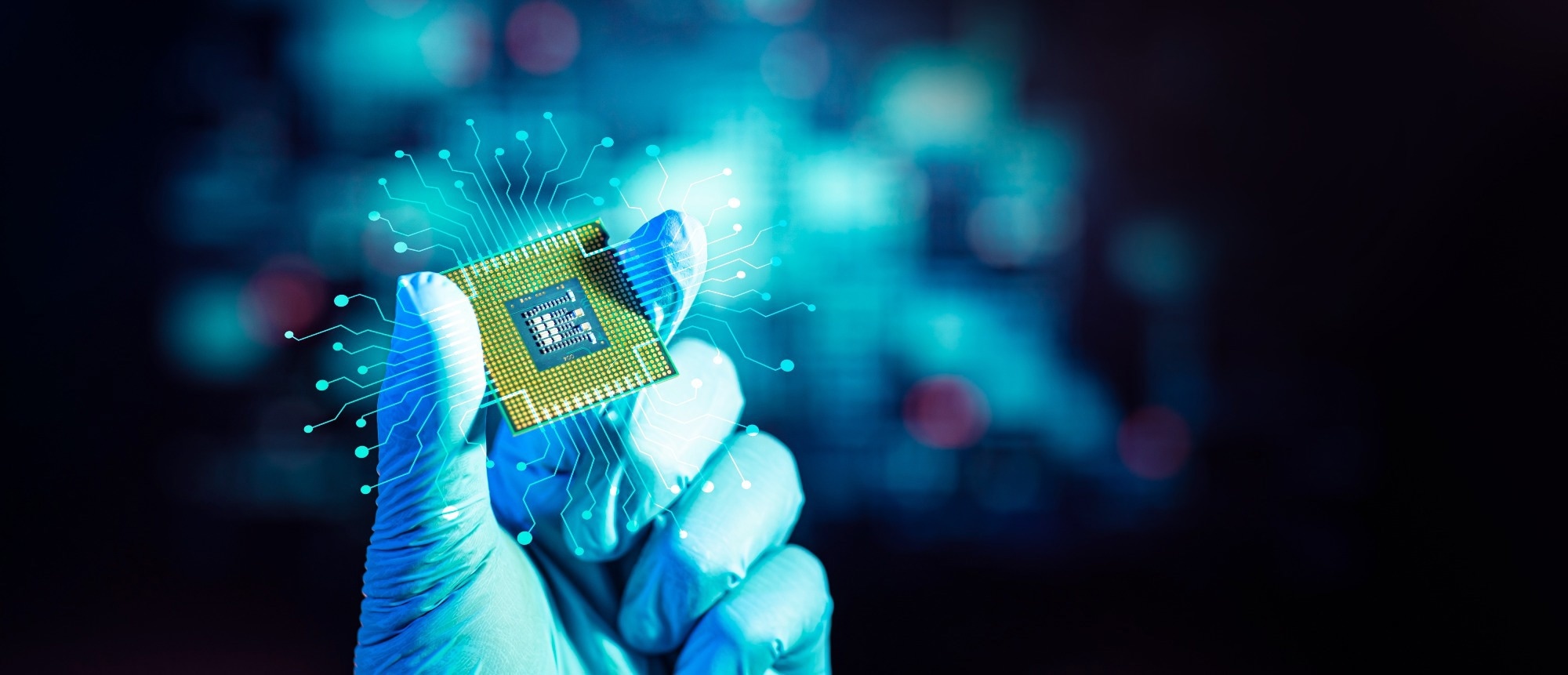In a groundbreaking study published in Nature Nanotechnology, a team of researchers from Tufts University has unveiled a novel nanomanufacturing method that utilizes water as the primary solvent. This eco-friendly approach not only reduces environmental impact but also sets the stage for the creation of advanced devices that seamlessly integrate inorganic and biological materials.

Image Credit: HAKINMHAN/Shutterstock.com
Incorporating 50 billion transistors into a microchip the size of a fingernail demands highly precise manufacturing techniques at the nanometer scale. This involves layering thin films and then using processes like etching, deposition, or photolithography to create the intricate patterns of semiconductor, insulator, metal, and other materials that comprise the tiny components of the chip.
Traditionally, this process relies on solvents to transport and deposit materials in each layer, but these solvents can be challenging to handle and harmful to the environment.
Researchers led by Fiorenzo Omenetto, the Frank C. Doble Professor of Engineering at Tufts University, have pioneered a nanomanufacturing method that utilizes water as the main solvent. This advancement not only makes the process more eco-friendly but also facilitates the creation of devices integrating both inorganic and biological materials. Their findings are detailed in the journal Nature Nanotechnology.
A key difficulty with using water is that many of the materials involved are hydrophobic, meaning they repel water. This is similar to how water droplets form on a waxed car, where the water does not spread evenly.
Omenetto and his team at Tufts University’s Silklab have found that silk fibroin, a protein found in common silk, can greatly improve water’s ability to uniformly cover various surfaces, depending on the concentration of fibroin used.
While other surfactants that modify water's properties are commonly used in commercial manufacturing, silk fibroin offers superior results with smaller quantities and is both biologically and environmentally friendly.
This opens up a huge opportunity in device fabrication. Not only can one deposit water-soluble materials and metals on silicon, but on all sorts of polymers. We can even deposit and print biological molecules on virtually any surface with nanometer precision.
Fiorenzo Omenetto, Frank C. Doble Professor, Engineering, Tufts University
The research conducted by Omenetto and his team highlights significant advancements in integrating biological molecules with electronic components. Their work on creating a hybrid silicon-biological transistor showcases a device that can not only respond to environmental changes but also transition between digital and analog processing. This innovation has the potential to pave the way for neuromorphic devices that mimic brain functions.
Biological molecules have already been utilized in various applications, such as detecting glucose levels in blood, identifying antibodies that indicate infections, and recognizing DNA mutations. However, the integration of these molecules into nanomanufactured devices like microchips could lead to the development of advanced biosensors and processors that are capable of responding to both health and environmental stimuli.
The study demonstrated the use of nanodevices through water-based processing, incorporating several components that are commonly used in contemporary technologies, including:
- Indium Gallium Zinc Oxide (IGZO) Transistors: These are primarily used in display technologies, flexible electronics, image detection, and touch screens.
- Aluminum Oxide Insulators: These are utilized in transistors to regulate the flow of electrons.
- Nickel Oxide Films: These are employed in optical filters, solar cells, and transparent displays.
- Perovskite Films: These are used in high-efficiency solar cells, light-emitting diodes (LEDs), light detectors, lasers, and memory storage.
The performance of these components was found to be on par with their commercially developed counterparts. Moreover, the researchers suggested that water-based manufacturing processes for microchips and other nanodevices could be seamlessly integrated into current manufacturing workflows. This indicates the feasibility of adopting such environmentally friendly processes in the production of advanced electronic devices.